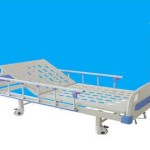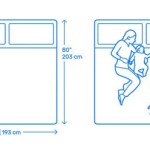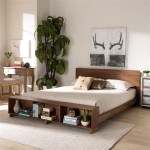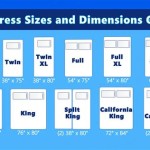```html
Understanding the Full Size Bed Box Spring
The full size bed, also known as a double bed, is a common choice for single adults and smaller sleeping spaces. Complementing this mattress is the full size bed box spring, a crucial component that significantly influences the overall comfort and longevity of the sleep system. This article delves into the specifics of the full size bed box spring, examining its function, construction, benefits, and considerations for selection.
A box spring, in its simplest definition, acts as a supportive base for the mattress. It's designed to absorb shock, provide even weight distribution, and elevate the mattress to a comfortable height. In the context of a full size bed, the box spring needs to be appropriately sized and constructed to adequately support the dimensions and weight of a full size mattress.
The "full size" designation refers to specific dimensions. A standard full size mattress measures approximately 54 inches wide by 75 inches long. Therefore, a full size box spring adheres to these dimensions, ensuring a proper fit and preventing overhang or insufficient support. Using the correct size box spring is essential for maximizing mattress performance and preventing premature wear.
The Function of a Full Size Bed Box Spring
The box spring serves several essential functions that contribute to a better sleep experience. These functions can be broadly categorized into support, shock absorption, and height optimization.
Support: One of the primary roles of the box spring is to provide consistent and distributed support to the mattress. This prevents sagging and uneven wear, extending the mattress's lifespan. Without a box spring, the mattress directly rests on the bed frame, potentially leading to localized pressure points and accelerated degradation. A full size box spring, specifically designed for the dimensions of a full mattress, ensures that the support is appropriately scaled and distributed across the entire surface area.
Shock Absorption: Every time a person moves on the bed, the mattress experiences impact and pressure. The box spring, acting as a buffer, absorbs a significant portion of this shock. This reduces the strain on the mattress itself, preventing internal damage and maintaining the mattress's structural integrity over time. The internal construction of the box spring, whether it employs coils or a solid foundation, is designed to dissipate these forces. This is particularly important for heavier individuals or those who tend to toss and turn during sleep.
Height Optimization: The box spring elevates the mattress to a more comfortable height, making it easier to get in and out of bed. A lower bed height can strain the back and knees, especially for individuals with mobility issues. The additional height provided by the box spring also improves airflow around the mattress, reducing the risk of moisture buildup and mold growth. The ideal height is subjective and depends on personal preference, but the box spring plays a crucial role in achieving the desired bed height.
Construction and Materials of Full Size Bed Box Springs
Full size bed box springs are constructed using a variety of materials and designs. The choice of materials significantly impacts the box spring's durability, support, and overall performance. Common construction methods include coil-based systems and solid foundation models.
Coil-Based Box Springs: These box springs feature a network of metal coils arranged within a wooden or metal frame. The coils provide responsive support and excellent shock absorption. The gauge and density of the coils determine the level of support and firmness. Higher-gauge coils tend to be more supportive and durable. Coil-based box springs are a traditional option and often provide a more "springy" feel compared to solid foundation models. However, they can be more prone to squeaking over time.
Solid Foundation Box Springs: Solid foundation box springs consist of a rigid frame, typically constructed from wood or metal, with a solid or closely spaced slat support system. These models provide firm and consistent support, making them a good choice for individuals who prefer a more stable and less bouncy sleep surface. Solid foundations are often quieter than coil-based box springs and may offer better support for heavier mattresses or individuals. They are also less likely to sag or develop soft spots over time.
Materials: The materials used in the construction of a box spring determine its durability and longevity. Wooden frames are typically made from solid wood or plywood, with solid wood offering greater strength and resistance to warping. Metal frames provide robust support and are often used in higher-end box springs. The covering fabric, usually a durable woven material, protects the internal components and provides a smooth surface for the mattress to rest on. The quality of the fabric can impact the box spring's resistance to wear and tear.
Low Profile vs. Standard Profile: Box springs are available in different heights, typically categorized as low profile or standard profile. Low profile box springs are generally 5-6 inches tall, while standard profile box springs are around 8-9 inches tall. The choice between the two depends on the desired bed height and the overall aesthetic of the bedroom. Low profile box springs can create a more modern and minimalist look, while standard profile box springs provide greater height for easier access to the bed.
Factors to Consider When Selecting a Full Size Bed Box Spring
Choosing the right full size bed box spring is crucial for optimizing mattress performance and ensuring a comfortable and supportive sleep environment. Several factors should be considered before making a purchase, including mattress type, bed frame compatibility, and personal preferences.
Mattress Type: The type of mattress being used significantly influences the ideal box spring choice. Innerspring mattresses generally work well with both coil-based and solid foundation box springs. Memory foam mattresses, however, often benefit from a solid foundation box spring as it provides consistent and even support, preventing the foam from conforming to the spaces between coils. Hybrid mattresses, which combine innerspring and memory foam layers, may also benefit from a solid foundation for enhanced support of the foam layers. It is vital to consult the mattress manufacturer's recommendations regarding the optimal support system.
Bed Frame Compatibility: Ensure that the chosen box spring is compatible with the existing bed frame. Some bed frames require a specific type of box spring, while others are designed to work with or without a box spring. Platform beds, for example, often have a built-in support system and may not require a box spring. Slat systems, if they are closely spaced and provide adequate support, may eliminate the need for a box spring. The height of the bed frame should also be considered to ensure that the combined height of the box spring and mattress results in a comfortable and aesthetically pleasing bed height.
Durability and Warranty: Invest in a box spring made from high-quality materials and designed for long-lasting performance. Check the manufacturer's warranty for coverage against defects in materials and workmanship. A longer warranty period typically indicates greater confidence in the product's durability. Read customer reviews to gauge the experiences of other users and identify any potential issues. Properly caring for the box spring, such as avoiding excessive weight and rotating the mattress regularly, can extend its lifespan.
Budget: Box springs range in price depending on their construction, materials, and brand. Set a realistic budget and compare options within that range. While it's tempting to opt for the cheapest option, investing in a higher-quality box spring can ultimately save money in the long run by extending the lifespan of the mattress and providing better support. Consider the long-term value and prioritize durability and performance over price alone.
Personal Preferences: Consider personal preferences when selecting a box spring. Some individuals prefer the slightly bouncy feel of a coil-based box spring, while others prefer the firm support of a solid foundation. If you share the bed with a partner, consider their preferences as well to ensure a comfortable sleep experience for both. Visiting a mattress store and testing different box spring options can help determine which type best suits your individual needs and preferences.
```
Mainstays 7 5 Quad Fold Metal Box Spring Full

Mainstays 9 Full High Profile Easy Assembly S Metal Box Spring

Exclusive Park Mgm Las Vegas Mattress Box Spring Now

Mainstays 7 Twin Full Queen Size Adjustable Metal Bed Frame Black Box Spring Required Wal Com

Mandalay Bay Exclusive Mattress And Box Spring Now

Idealhouse Full Size Bed Frame With 4 Storage Egypt U

Full Box Springs The Home

Exclusive New York Mattress Box Spring Set Now

Vecelo Full Size Bed Frame 55 5 In W Metal Platform Frames No Box Spring Needed Steel Slat Support Black Khd Yt F09 The Home

The Fairfield By Marriott Bed Mattress Box Spring Bedding Sets And More








